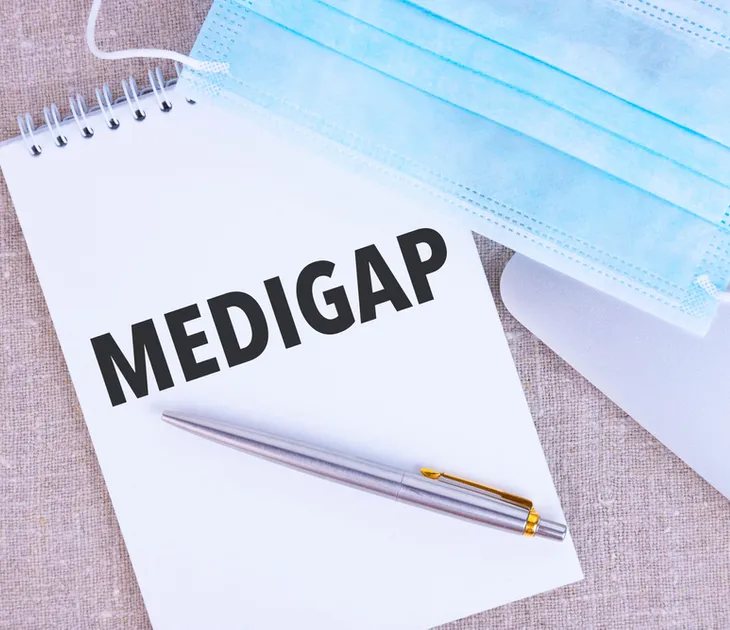Our health is arguably the most important and valuable thing in life. This is why many people invest in supplemental Medicare insurance plans, also known as Medigap policies. While the Original Medicare is great, it isn’t perfect. And it certainly does not cover all health care costs.
Despite it being so important, health insurance is a very confusing thing to navigate. There are an overwhelming number of supplies and plans to choose from, and all of them seem to be continuously changing. To help, here’s a look into the best low cost options for medical supplemental insurance in 2023…
What is a Medicare Supplement (Medigap) Plan?
Medicare supplemental insurance plans are also known as Medigap plans. These are insurance policies that fill any gaps in original Medicare. “Medigap plans pay for the leftover costs not covered by Medicare Part A and Part B, such as coinsurance, copayments, and deductibles,” explains Investopedia.
Unlike Medicare, supplemental insurance plans are sold by private companies, but according to the source, they are standardized and have to follow Medicare rules. The plans have letters (A to N), and Plans C and F are no longer available to newly eligible applicants.
Plan F
Anyone who qualified for Medicare prior to Jan. 1, 2020 will likely want to go with Plan F. It covers all out of pocket costs that may incur, including deductibles and coinsurance, explains Value Pengiun.
What’s so great about Plan F is that it’s so comprehensive. It leaves little to worry about in the sense of day-to-day expenses (i.e. paying for a visit to the doctor’s office). The downside is that it’s one of the most expensive options. The premium for Plan F is around $179 per month. Unfortunately, the only people who have access to Plan F are those who became eligible for medicare before Jan. 1, 2020 and people who were already enrolled in it.
Plan G
For people who can’t access Plan F, Plan G is the next best option. As of lately, it’s the most popular supplemental insurance plan because it has the most comprehensive coverage for seniors and Medicare enrolees. According to Investopedia, it covers every single gap in the Original Medicare, except the Part B deductible (which is only $226 in 2023). Once people pay this cost, Plan G covers all doctor visits, blood tests, or any outpatient medical treatment, notes Value Penguin.
People signed up for Plan G also don’t have any copayments or coinsurance. They receive some international emergency care coverage, and unlike Plan K and L or Medicare Advantage Plans, there is no limit on maximum out of pocket expenses, notes the source. However, it comes at a cost. Rates can be expensive at $145 per month. Value Penguin suggests weighing this cost against any other potential medical expenses.
Plan N
The third most popular choice is Plan N. This plan is structured to keep plan costs low while maintaining good coverage. “It provides 100% of Medicare Part B coinsurance costs, with the exception of $20 copays for office visits and $50 copays for emergency room (ER) visits,” writes Forbes Health. It also doesn’t cover Medicare Part B excess charges. This means people could incur additional fees if their medical provider doesn’t accept the Medicare-approved amount for health care services.
This plan is a good option for people with fewer medical needs because while it doesn’t have the coverage of Plan F and G, it’s a lot cheaper. Beneficiaries of Plan N are responsible for paying the annual Part B deductible, explains the source, and the risk of higher out-of-pocket expenses is worth it if they don’t foresee many medical expenses.
Plan K
Plan K is the cheapest option. While it does provide some additional coverage, it’s not nearly as much as Plan F, G, or N. It only covers half the cost of Medicare Part B coinsurance or copayment, blood, Part A hospice, skilled nursing and the Part A deductible. For reference, other plans, including Plan G, have full reimbursements for these types of health care costs. There’s also no coverage for Part B deductible, Part B excess charges, and foreign travel exchange. However, the monthly premium is only $77. This makes it a good option for low-income seniors.
What makes Medicare supplement Plan K unique is the yearly out-of-pocket limit. Once the Part B deductible and out-of-pocket yearly limit has been met, 100-percent of all covered services a paid for by the Medigap plan. There should be no other out-of-pocket medical costs as long as the services are covered by Medicare. In 2023, the out-of-pocket limit is $6,940.








